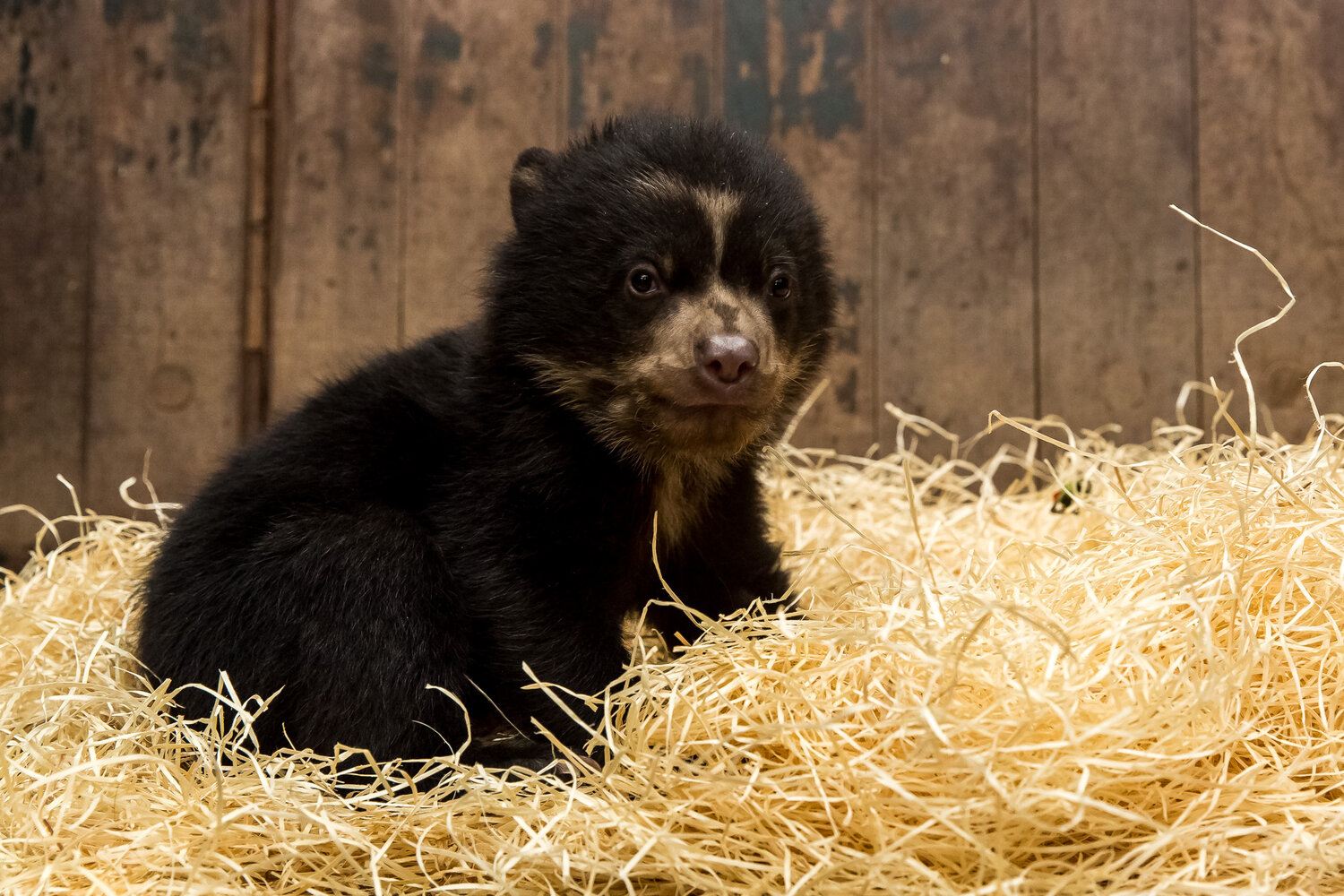No, you don’t need to change your specs. The little brown-and-black face peering sleepily from the straw does “bear” a striking resemblance to a much-loved character from darkest Peru. But this young spectacled bear isn’t waiting anxiously at Paddington Station, he’s right here in Berlin.
The baby bear was born at Tierpark Berlin on 26 December and has now successfully completed his medical examinations. On 27 March, vet Dr Günter Strauß confirmed his sex, implanted the mandatory chip, and gave the young bear his first vaccinations. In just a few weeks, the cub – who is yet to be named – will join his mother Julia (20) and grandmother Puna (27) in the outdoor area of the spectacled bears’ habitat, where he is sure to win the hearts of Tierpark visitors. Zoo and Tierpark Director Dr Andreas Knieriem is thrilled about the new arrival: “Welcoming new baby bears is always a joyous occasion – especially when it means we are able to make a contribution to the survival of a threatened species.”
Since November 2017, any spectacled bears in Europe thinking of starting a family have to submit an application to Dr Florian Sicks in Berlin. Dr Sicks is the Tierpark’s bear curator and recently became the coordinator of the European Endangered Species Programme for the spectacled bear. It is his job to keep the population of these bears in Europe as stable and healthy as possible. He therefore functions as a kind of dating agency and accommodation office for spectacled bears in Europe. “Tierpark Berlin has been home to spectacled bears since 1956 – that was just one year after the Tierpark opened,” says Dr Sicks. This is the seventh cub born to experienced mother Julia, but only the second cub sired by Carlos (21). It is the first spectacled bear born at Tierpark Berlin since 2013. A total of 17 spectacled bear cubs have grown up in the Tierpark. These bears have contributed to safeguarding the global population of the threatened species by moving to new homes in countries as far away as Japan, Russia, and Argentina.
Spectacled bear facts
The spectacled bear – also known as the Andean bear – is found in the Andes, from Bolivia in the south to Venezuela in the north. The bears are at home in a variety of habitats, from rainforests to high-altitude grasslands, and live anywhere from 200 to 4,700 metres above sea level.
The IUCN Red List classifies the spectacled bear as “Vulnerable”. The main threat to their survival is loss and fragmentation of habitat, caused by deforestation and conversion of land for agricultural use. Spectacled bears that wander onto fields in search of food – either crops or domestic animals – are often killed by their human rivals. Spectacled bears are primarily herbivorous, occasionally adding protein to their diet by eating insects, rodents, and sometimes larger animals – such as domestic sheep.
